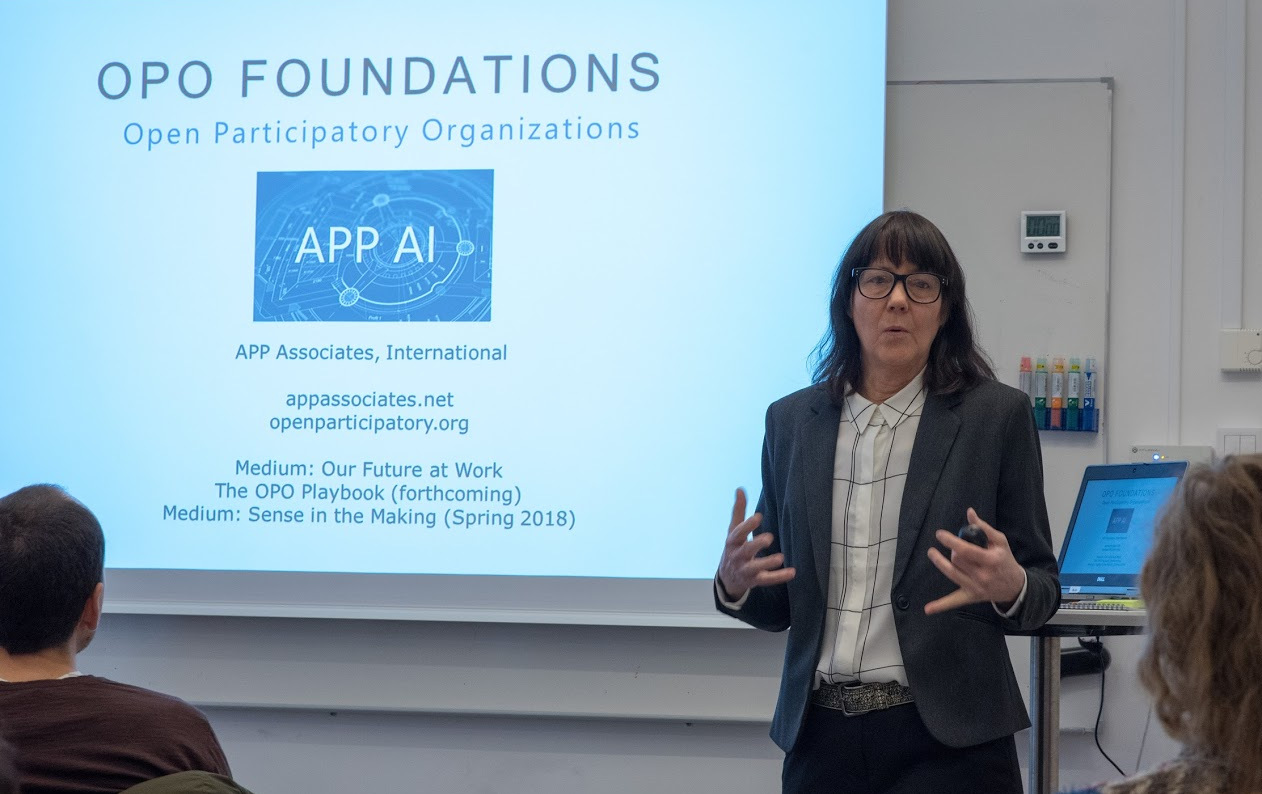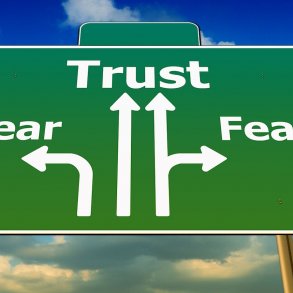Mathias Holmgrem interviews Bonnitta Roy, originally published as a single article on crisp.se
Bonnitta Roy was one of the keynote speakers at last year’s Agile People Sweden conference and she also held a course here at Crisp last February on self-organization beyond the team using Open Participatory Organizations (OPO), which was very well received by our course attendants. She is coming back to Stockholm in November and we got the opportunity to sit down with her and ask some questions about open participation and her work on the future of organizational life.
What is open participation and why does it matter in organizational life today?
Organizations face continuous pressure to “level up” to new social and economic realities. This places enormous strain on legacy structures which are difficult to overhaul, and conventional management practices which are difficult to shed. Instead of offering yet another “off-the-shelf” product, we help people see simple but powerful opportunities to become more open and more participatory in their everyday ordinary work.
In agile software development there is the notion of refactoring when code has become too unruly and is increasingly built up in an ad hoc manner. Refactoring means starting over with clean, elegant code. It releases a tremendous amount of complexity from the system. Open participatory practices do the same for organizational structures. It releases complexity and affords more elegant ways to solve complex problems.
So OPO is basically a location based structure to self-organize and to self-manage in organizations?
Self-organization and self-management are core principles of open participation. Location-based-structure is one way to optimize them. It is the only way I know that also avoids the “law of suboptimization” which states that when you optimize the lower system, you suboptimize the higher (and vice-versa). This “law” leads to paradoxes in incentive systems that have to juggle rewarding individual merit, team performance, and company profits.
Locations are defined as mutually interdependent. No individual location can be defined outside of its context with larger strategic wholes; but the “whole” is not defined other than by the interdependent coherence of all the locations. The language of “location” helps reinforce the synergistic way of thinking. If you renovate your kitchen you are simultaneously adding value to your house, and to the experience of everyone who lives there. Similarly, in the OPO, people focus on making sure that the locations are healthy, and that the relationships between them are synergistic. This simultaneously adds value to the larger whole.
Let’s ask some frequently asked questions, as most readers may be new to these ideas.
FAQ 1) What happens with managers in a self-managed organization or at a self-managed location?
Well, they are not called managers anymore, because the role-identity of “manager” is a static, fixed role. What we can expect is that people take up leadership roles “on demand” depending on what the context the team is experiencing, or how the location evolves. People can often settle back into the habit of waiting for someone to tell them what to do, and there will always be an individual or two who will fill that role out of a power grab or out of pure frustration. This is why most self-managed locations today need support from coaches or need a group facilitation as part of their on-going self-reflection.
FAQ 2) How do you make sure that people and teams do what they are supposed to do?
It is a psychological fact that most people, from a very early age, are genuinely motivated to use their skills — what they know how to do well, and what they are proud of doing well — to help other people. Even a toddler will leave their toys to pick up and hand something back to an adult stranger who feigns to have dropped it. It turns out, however, that when the toddler is rewarded for this behavior, they stop performing it.
This means what drives people is helpful participation, not rewarded performance. To build a robust location means to clearly identify the purpose to which people are contributing their skills. Placing teams in conversation with end users and clients, for example, puts a real face on purpose. Team play and group learning are also powerful purpose-driven values.
FAQ 3) What is the role of leaders if there are nobody to manage?
In the OPO toolkit, we identify six different types of leaders. There are leaders focused on autonomy, who help people develop their individual self, from reactive to creative modes. In the words of psychologist Robert Kegan, they help people become self-authoring. There are leaders who have a high relational competence who can engage people at a deep affective level, providing valuable support and counseling for people who are stuck, overwhelmed, or facing a challenge they cannot handle alone but neither in a public setting. There are leaders who are very action-oriented who, like sports coaches, can infect teams with a great deal of goal directed enthusiasm, grit, and determination.
These leadership types are somewhat conventional. At best, they act as servant-leaders, but there is still a kind of gap between what they are doing, and the people whom they serve.
In a participatory organization, there is the possibility of a new form of leadership where this gap doesn’t exist. These leaders are fully in the game, and lead by the force of their example. It is the leadership of outstanding participation, a leader not above others, but a leader among others. There are three types of participatory leaders: the inspirational leader, the transformational leader, and the synergizer.
Like the sports coach, the inspirational leader is action-oriented. But unlike a coach who teaches from the locker room or drives performance from the sidelines, the inspirational leader picks up the ball and delivers an inspirational performance in the midst of the game itself. Think Elon Musk tackling the space industry.
The transformational leader is an alchemist. In the midst of anger, they create laughter, in the angst of defeat they create play, in the shock of failure, they create curiosity.
Lastly, the synergizer is a leader whose presence and participation in a team generates a greater coherence than is possible without them.
Now the interesting thing is with OPO sensemaking tools, we can identify the hidden leadership gifts in individuals before they mature and manifest. This helps us customize developmental support to suit the unique ways people contribute to shared leadership.
FAQ 4) How do you create alignment towards goals and establish strategic focus in an organization without a clear chain of command?
In the OPO, alignment and strategy are challenges in designing and populating locations, rather than challenges in establishing and maintaining control.
FAQ 5) If there are no managers, who is then responsible to make sure that regulatory rules and laws are followed?
Depending on the complexity involved, regulatory rules would fall under the objectives of a network location if they were global to the organization as a whole, or to the core location in which the rule applies. For example, international trade laws might apply on the network level, whereas electrical wiring code on the local level.
FAQ 6) How do you make sure teams and departments don’t overspend resources?
Resource allocation is re-imagined as flows in the OPO. There should be phase of throughput with milestones and key parameters for “opening the flow gates” in one directions or another, which are basically design choices between enabling and constraining dynamics. In addition, questions of resource allocation are examined through all four strategic lenses, in order to more holistically understand the need that is being experienced.
Part 2 of this article is here.
Republished with permission.
Featured Image and some paragraph spacing added by Enlivening Edge Magazine. Image by Gosia from Pixabay





